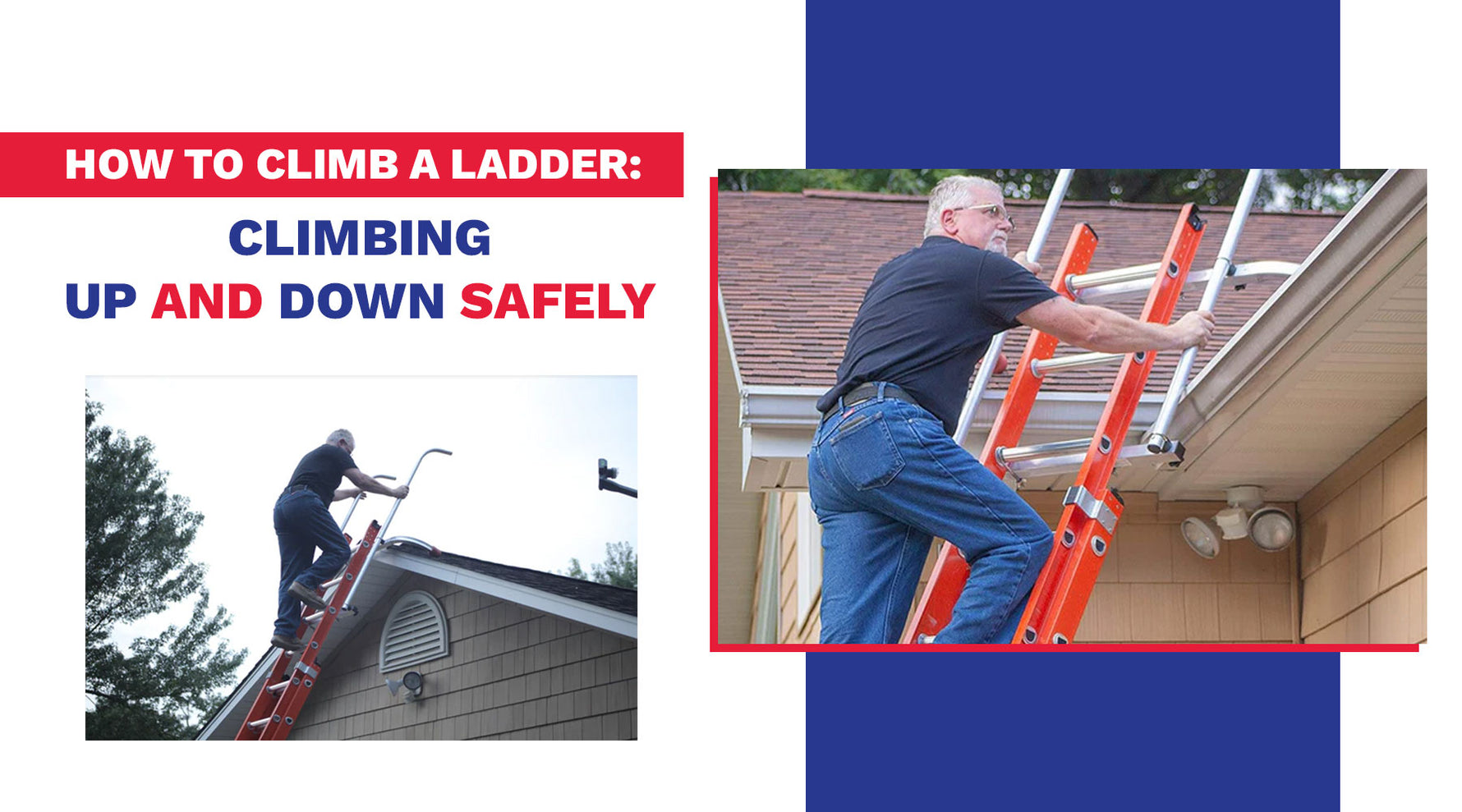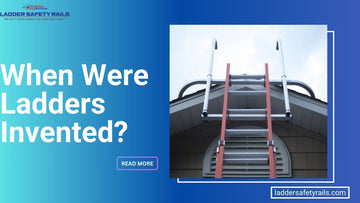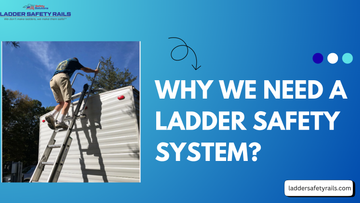
Ladders are versatile tools used in various settings, from construction sites to DIY home projects. While they offer a convenient way to reach heights, they can be hazardous if not used correctly. One essential ladder safety rule is the "3 Points of Contact" rule, which plays a vital role in preventing accidents and ensuring safe ladder usage.
3 Points of Contact Rule of Ladder Safety
What is the 3 Points of Contact Rule?
The 3 Points of Contact rule is a fundamental ladder safety guideline that emphasizes the importance of maintaining three contact points with the ladder at all times when ascending or descending. These three points of contact are usually:
-
Two hands
-
One foot
By adhering to this rule, you ensure that you remain balanced and stable while on the ladder, significantly reducing the risk of falling.
Importance of the 3 Points of Contact Rule
The 3 Points of Contact rule is paramount for ladder safety for several reasons:
- Enhanced Stability: Keeping two hands and one foot on the ladder means you have a secure hold and balance. This stability is crucial when working at heights, where a fall can result in severe injuries.
- Reduced Risk of Slipping: Maintaining three points of contact minimizes the likelihood of slipping or losing your balance on the ladder's rungs.
- Quick Response: In case of any unexpected movements or shifts in the ladder, having three points of contact allows for a quicker response to regain your balance.
- Greater Control: It provides better control over your movements and helps you focus on the task at hand rather than worrying about falling.
Overall, the 3 Points of Contact rule is a simple yet highly effective way to ensure safety when using a ladder.
Safety Rules to Follow When Using Ladders

In addition to the 3 Points of Contact rule, there are several other safety rules to observe when using ladders:
- Inspect the Ladder: Before using a ladder, check it for any signs of damage or wear, such as missing rungs, cracks, or loose fasteners. Using a damaged ladder can be extremely hazardous.
- Position the Ladder Properly: Ensure the ladder is set up on a stable, level surface, and follow the manufacturer's guidelines for the proper angle at which to place it against a wall or structure.
- Maintain a Safe Distance: Keep the ladder at least three feet away from walls or other vertical surfaces. This is known as the "3-foot rule" and helps prevent the ladder from tipping.
- Choose the Right Ladder: Select the appropriate type of ladder for your task. For example, use a stepladder for low to medium-height work and an extension ladder for greater heights.
- Climb Carefully: Ascend and descend the ladder slowly and deliberately. Never rush or skip rungs. Maintain the 3 Points of Contact rule throughout.
- Do Not Overreach: Avoid leaning too far to one side or overextending your reach. Always keep your belt buckle within the ladder's side rails.
- Avoid Using a Ladder in Bad Weather: Wet or slippery rungs can increase the risk of accidents. If it's raining or snowing, wait for better conditions to use the ladder.
- Keep Tools Secure: Use tool belts or holsters to carry your tools, keeping your hands free to maintain the three points of contact.
- Be Mindful of Others: If you're working in a shared space, ensure that there's a barrier or warning signs to prevent others from walking into the ladder.
- Don't Leave Unattended: Never leave a ladder unattended. When not in use, store it properly to prevent accidents or misuse.
What are the Do's and Don'ts of the 3 Point Contact Rule?

The Do's:
- Do Maintain Three Points of Contact: Always have two hands and one foot, or two feet and one hand, in contact with the ladder.
- Do Use Proper Footwear: Wear shoes or boots with non-slip soles to ensure good traction on the ladder rungs.
- Do Climb Slowly and Deliberately: Ascend and descend the ladder one rung at a time, maintaining your three points of contact.
- Do Keep Your Center of Gravity Within the Ladder: Avoid leaning too far to one side or overreaching to maintain your balance.
- Do Keep Tools Secure: Use a tool belt or holster to carry your tools, ensuring your hands are free to grip the ladder.
The Don'ts:
- Don't Rush: Avoid climbing or descending the ladder in a hurry. Take your time to maintain safety.
- Don't Overreach: Never lean out too far to reach a distant point. Climb down and reposition the ladder if necessary.
- Don't Carry Heavy Loads: Ladders are not meant for carrying heavy loads. Use a pulley system or have someone pass the materials to you.
- Don't Use a Damaged Ladder: If the ladder is damaged in any way, do not use it. Get it repaired or replaced.
- Don't Place the Ladder on Unstable Ground: Ensure the ladder is on a level, stable surface to prevent tipping.
By following these do's and don'ts, you can significantly reduce the risk of ladder-related accidents.
The 3 Points of Contact rule is a fundamental and highly effective ladder safety guideline that ensures stability, reduces the risk of falling, and allows you to maintain control when working at heights. Combined with other safety rules and best practices, such as proper ladder placement, equipment maintenance, and cautious climbing, you can minimize the risk of ladder accidents and create a safer work environment.
Remember, safety should always be a top priority when using ladders. By adhering to these safety guidelines and incorporating them into your routine, you can enjoy the benefits of using ladders for various tasks while minimizing the associated risks.
Read More Blogs:

FAQs
What is the 3-point contact rule for ladder safety?
The 3-point contact rule for ladder safety is a fundamental guideline that requires individuals to maintain three points of contact with the ladder at all times when ascending or descending. This typically involves having two hands and one foot, or two feet and one hand, in contact with the ladder to ensure stability and reduce the risk of falling.
What is the 3-foot rule for ladders?
The 3-foot rule for ladders is a safety guideline that recommends keeping the base of the ladder at least three feet away from walls or other vertical surfaces. This helps prevent the ladder from tipping over and provides a stable working platform.
What are three precautions you must take when setting up a ladder?
When setting up a ladder, you should take the following precautions:
- Ensure the ladder is on a stable, level surface.
- Follow the manufacturer's guidelines for the proper angle at which to place the ladder against a wall or structure.
- Check the ladder for any signs of damage or wear, such as missing rungs, cracks, or loose fasteners, before use.
How many points of contact should always remain on the ladder?
When using a ladder, a minimum of three points of contact should always remain on the ladder. This typically involves having two hands and one foot, or two feet and one hand, in contact with the ladder to ensure stability and safety.
Check Out Our Ladder Stabilizer for Roof and Hand Rail System






